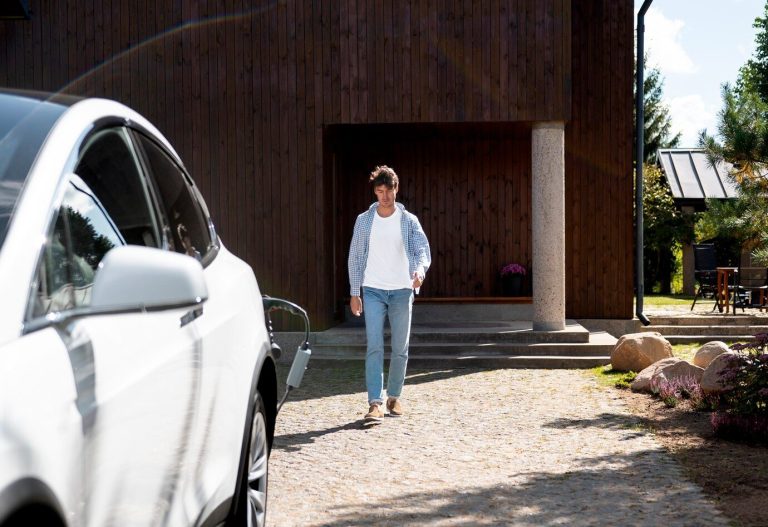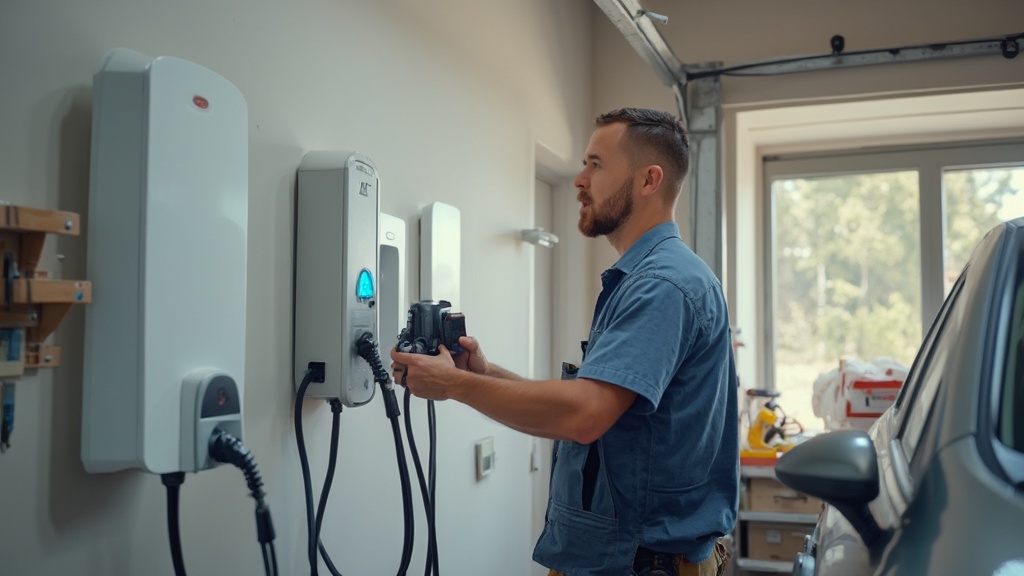Forget everything you know about refueling—the ritual of visiting gas stations belongs to your past. Home charging doesn’t just change where you power up; it transforms when, how, and even why you think about energy. Your garage outlet just became your personal energy portal.
New EV owners quickly discover that charging infrastructure makes all the difference, with options ranging from basic adapters to advanced high-powered stations like the 180 kw EV charger for commercial applications.
But where should a beginner start? Let’s demystify the home charging experience.
Understanding the Three Charging Levels
The charging level you choose dramatically impacts your daily experience. This fundamental choice determines whether your car charges in hours or days.
Level 1 charging involves:
- Using the standard charger included with most EVs
- Plugging into any regular 120V household outlet
- Gaining roughly 3-5 miles of range per hour
- No additional installation requirements
- Adequate for plug-in hybrids or minimal daily driving
Level 2 charging steps up to:
- 240V power (like your dryer or oven uses)
- Dedicated charging equipment installation
- 15-40 miles of range per hour, depending on amperage
- Complete overnight charging for most driving needs
- The sweet spot for most EV owners
DC Fast Charging (Level 3) provides:
- Primarily commercial charging for on-the-go needs
- Not typically installed residentially due to power requirements
- 80% charge in 20-40 minutes for most vehicles
- Higher cost per charging session than home options
Most beginners start with Level 1 while transitioning to Level 2 once they experience the convenience difference.
First Steps: Evaluating Your Home Electrical Capacity
Your home’s electrical infrastructure determines your charging capabilities. Understanding these limits prevents surprises during installation.
Start by assessing:
- Your electrical panel’s total amperage (100A vs 200A service)
- Available space for a new dedicated circuit breaker
- Distance from the panel to your parking location
- Existing capacity utilization (how many high-draw appliances you already have)
These factors determine whether your home can immediately support Level 2 charging or might require electrical service upgrades. Most modern homes with 200A service can accommodate charging without modifications.
Choosing Between Portable and Wall-Mounted Options
Your first substantial decision involves permanence versus flexibility. Both approaches offer viable charging solutions with different advantages.
Portable Level 2 chargers offer:
- Plug-in convenience to 240V outlets (like a dryer outlet)
- No permanent installation required
- Ability to take your charger when moving
- Lower overall cost without installation
- Flexibility to charge at multiple locations
Wall-mounted chargers provide:
- Cleaner, more integrated appearance
- Potentially higher power delivery
- Weather resistance for outdoor installations
- Advanced features like access control and scheduling
- Enhanced safety features and permanent connections
Many beginners opt for quality portable options initially, transitioning to wall-mounted solutions once they’ve confirmed their long-term needs.
Installation Process: What to Expect
Professional installation ensures safety and code compliance. While DIY might tempt some, electrical work requires proper expertise and permitting.
A typical installation includes:
- Initial consultation and site assessment
- Electrical load calculation for your home
- Installation of a dedicated circuit breaker
- Running appropriate gauge wiring to your charging location
- Mounting hardware and making final connections
- Testing and demonstrating proper operation
The process typically takes 2-4 hours for straightforward installations, with complex scenarios requiring additional time for panel upgrades or extensive wiring runs.
Charging Etiquette and Best Practices
Optimal charging habits extend battery life and reduce costs. Small behavioral adjustments yield long-term benefits for your vehicle.
Adopt these charging habits:
- Keep your battery between 20-80% for daily use
- Only charge to 100% before long trips
- Take advantage of scheduled charging during off-peak rates
- Avoid frequent DC fast charging for routine needs
- Let your battery management system work (avoid frequent partial charges)
These practices not only preserve battery health but also minimize your electricity costs and environmental impact.
Common Beginner Mistakes to Avoid
New EV owners often make predictable missteps. Learning from others’ experiences helps you avoid unnecessary complications.
Watch out for:
- Underestimating charging needs based on ideal conditions
- Relying exclusively on public charging infrastructure
- Installing undersized charging equipment that limits future vehicles
- Overlooking utility company incentives and special EV rates
- Placing chargers in locations that create tripping hazards or exposure to elements
Proper planning prevents most of these issues and ensures a smooth transition to electric driving.
Weather Considerations for Outdoor Installations
Environmental exposure affects charging equipment durability and safety. Outdoor installations require additional weatherproofing considerations.
For outdoor installations, ensure:
- Proper NEMA-rated weatherproof enclosures
- Protection from direct water exposure
- Mounting height that prevents snow accumulation or flooding issues
- Cable management systems that keep cords off the ground
- UV-resistant materials for long-term sun exposure
These precautions extend equipment lifespan and maintain safe operation regardless of weather conditions.
Smart Charging: Beyond Basic Power Delivery
Connected charging unlocks optimization opportunities beyond simple electricity delivery. While not essential for beginners, smart features provide valuable benefits as you become more familiar with EV ownership.
Smart charging capabilities include:
- Time-of-use rate scheduling to minimize costs
- Remote monitoring and control via smartphone apps
- Energy consumption tracking and reporting
- Integration with home energy management systems
- Automatic updates as charging standards evolve
These features transform charging from a basic utility to an integrated part of your home energy ecosystem.
The transition to home charging represents one of the most satisfying aspects of EV ownership. The convenience of starting each day with a full charge quickly becomes the new normal, making the old ritual of gas station visits seem increasingly archaic and inconvenient.










